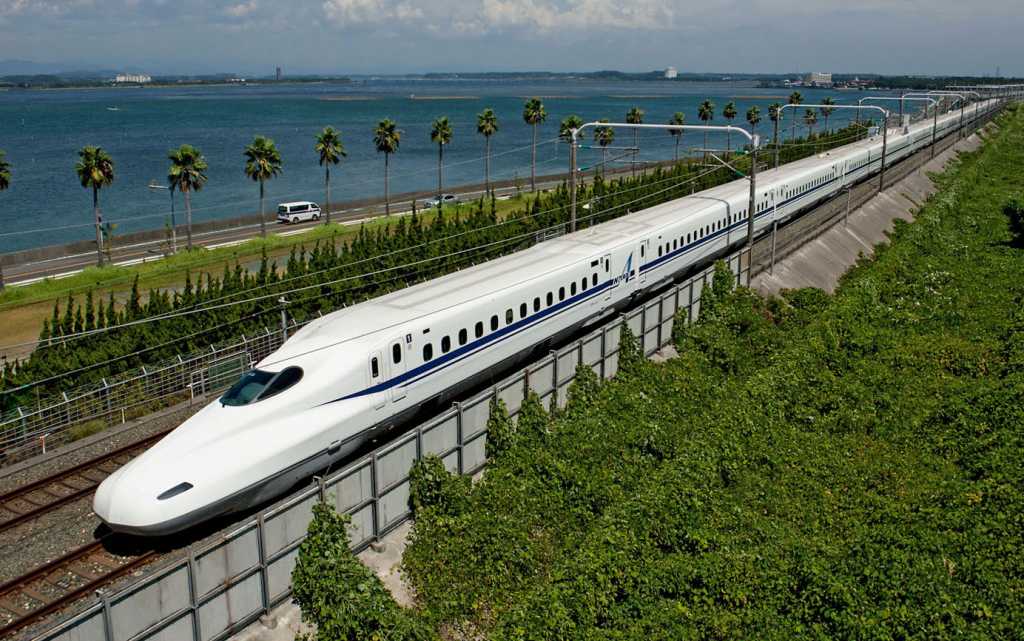Its official Japan has won the multi-billion Indian HSR contract. India’s move to opt for Japanese bullet trains on the Mumbai-Ahmedabad route has raised some concerns in the neighbourhood, especially China which is vying for a greater share of Indian infrastructure. While conclusion of such a historic deal between the 2 strategic partners is a very good news, India should be careful and ensure its HSR dream does not end up to become a national embarrassment like that of Taiwan.
Taiwan’s rapid economic growth during the latter half of the twentieth century led to saturation of highways, conventional rail, and air traffic systems in the western transport corridor, which threatened to impede further growth. The idea of a new high-speed rail line arose in the 1970s, and informal planning began in 1980. In 1987 the executive branch of Taiwan’s government, the Executive Yuan, instructed the Ministry of Transportation to launch a feasibility study for a high-speed rail line in the western Taiwan corridor, which was completed in 1990. The study found that in a comparison of potential solutions to traffic problems in the corridor, a high-speed rail line would offer the highest transit volume, lowest land use, highest energy savings, and least pollution. In July 1990 the Preparation Office of High Speed Rail (POHSR) was established and a route was selected in 1991. Plans for the THSR were subsequently approved by the Executive Yuan in June 1992 and by Taiwan’s legislature, the Legislative Yuan, in 1993.
After a few delays, the Taiwan High Speed Rail (THSR), which is the largest current Build-Operate-Transfer (BOT) Railway Project in the world, with eight stations on the line connecting the metropolises of Taipei and Kaohsiung, began its passenger service in January 2007. However, by February 2009, it became very clear that the Taiwan area government must take over the THSR Corporation (THSRC) in one way or another, because the latter had already mired in enormous debts, losing roughly two thirds of its capitalization. The THSR was only able to break even once in April 2008.It should also be noted that the Taiwanese government choose Japanese suppliers after planning based on European high-speed technology was already well-advanced. This led significant cost overruns & damage payments to Euro train.
Before reaching an agreement with lenders and the government which paves the way for a debt restructuring, the Taiwan High Speed Rail (THSR),was looking at defaulting on a NT$382bn ($12.05 billion) loan. The Taiwanese government is also planning to reduce ticket prices from NT$1,630 currently to the original price of NT$1,490 for a single journey from Taipei to Kaohsiung, with a view to encouraging more passengers to take the train.
The Taiwan High Speed Rail (THSR) is a successful project in terms of ridership and achieving many of its goals of shifting transportation modes from highways & airways to railways. The problem with Taiwan HSR is largely with the method used to finance it – heavy private sector borrowing. The 80% private funding method left Taiwan High Speed Rail (THSR) financially vulnerable to poor construction decisions, cost overruns, and the global recession.
In other words, the Taiwan High Speed Rail (THSR) system would be a very financially strong system were it not for the flawed method used to build it – which has left the system with heavy debt, even though they have been significantly eased by the massive government bailout. Aside from that, however, the system does not require operating subsidies thanks to very high ridership in Taiwan.
Had the Taiwanese government, like the Indian government, simply funded the HSR system itself as a piece of public infrastructure, without eventually having to bailout the private investors, then the system would almost certainly be a very successful venture. Having 80% of the construction costs coming from the private sector was a disastrous move, but the Taiwan HSR system has overcome those issues.
Modi Government has largely managed to avoid this problem, because the majority of the finance for the ambitious Infrastructure project will come from Japanese government at very low interest rates,0.01% to be exact , compared to the 0.3% cap decided by India recently, with the tenure of the loan at 50 years, along with a 10-15 year moratorium. The Taiwanese experience with HSR should be thoroughly studied and it should be insured that India does not repeat the problems the Taiwanese committed when building their HSR.
